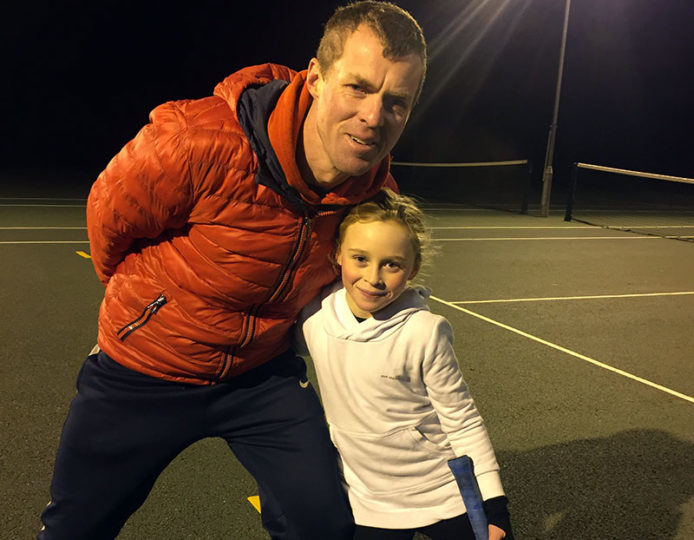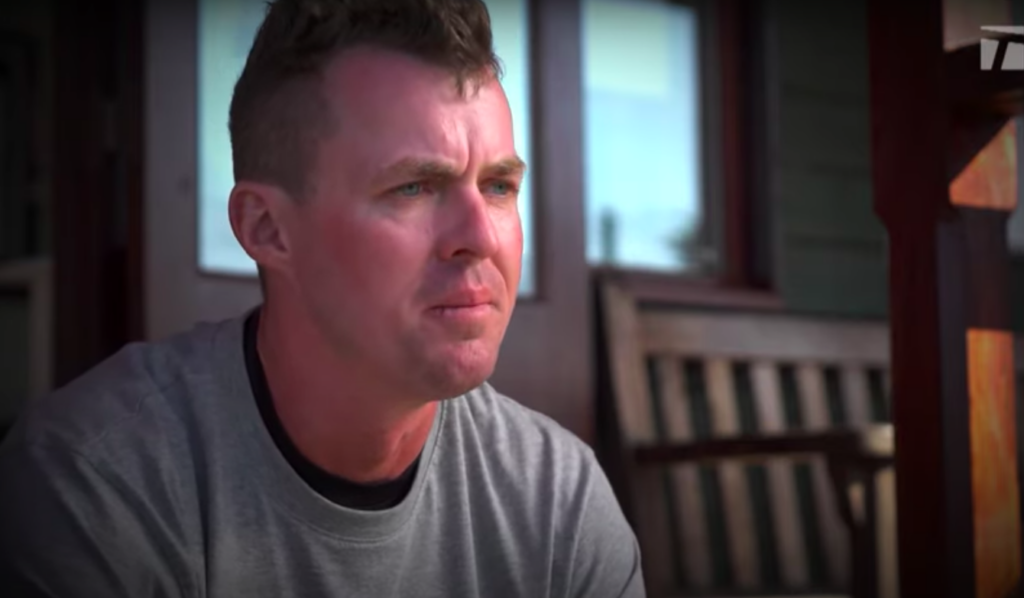In current environment we are in I found this an outlet, expressing my feelings and emotions …..
“For 40 years tennis has been a daily part of my life: playing with my mum from a young age; competing nationally as a junior; the excitement of going to Wimbledon at 14 with my best friend, Stephen; becoming a coach; meeting people of all nationalities and starting a massive tennis journey with my daughter, Sadie. Sadie was ranked UK’s no1 in her age group; she had huge potential and was an up and coming player having won over 40 competitions across the UK. If she wasn’t playing and training, then Sadie was in the garden doing a fitness routine, playing swing ball or watching the game on TV, studying her favourite players. Sadie’s and my passion was tennis and together we spent hours a day with only tennis in our minds – training, travelling the UK with Sadie competing, visiting pro tournaments around the UK and in Europe including Kitzbuhel and Basel, all from the age of 5.
A few days after Sadie died I knew I needed to return to tennis. I needed to return to my community, to what we both loved so much. Upon returning, and ever since, it has been such a life support to me. Just the game itself is a huge therapy. Having the community around me and having that connection with Sadie is a process of dealing with her loss. Tennis helps me to cope and manage. The mental battle over the last two years has been immense and the only way I can handle it is via tennis. In some ways it’s behind and in front of the racquet. The trauma of the day Sadie suffered a sudden and unexplained anaphylactic shock sits at the front of my mind and will stay there forever. What’s stopping it from exploding is tennis.
As a family we started a Foundation in her name. Its aim is to reach as many children as possible in schools and clubs, giving them the chance to be introduced to the sport no matter where they are from, to play the sport and become more athletic in day-to-day activities. Providing sessions during school curriculum time and arrange competitions and events, as well as setting up a number of allergy projects. These goals have helped me massively to carry on – for Sadie, with her legacy and also for myself and family.
Sadie, on her tennis pathway, was going to be something special and she will still be through the Foundation created in her name. I am determined to do for her as much as she was determined to do to succeed on court and in life. Sadie inspired me and many people she met. During a national competition in London, where she had reached the final, between matches she would do anything to keep moving. If a court wasn’t free, we would run around the car park, find a wall to keep her reactions in tune. Running past her opponent for the final, who was sitting in the cafe, Sadie stopped and said, “Come and warm up with me and my dad. Let’s get ready for the final together. It will be good for us both to be warmed up to play our best.” Sadie’s enjoyment and motivation came not only from winning, but also from getting the most out of herself and opponents on court.
Sadie and I are still on that tennis journey together. It gives me encouragement and determination. There are days when it makes me incredibly sad, not seeing Sadie at competitions and thinking about what she could be doing and achieving, not just in tennis but in life in general. Her younger sister, who was one when Sadie died, is now not growing up with Sadie’s charisma and animated personality around her. My older daughter and wife struggle in their ways and I find it hard to come home from a positive day on court to find my family in disarray. However, for me, the release is back on court the following day. Talking to the tennis community around me helps heal the wound but the scab is always being picked, always bleeding.
Sadie’s room has remained the same as it was on 21st August 2018. As a family we go in and say ‘Hi’; her sisters go in and cuddle her teddies on the bed. Her spirit is there and her spirit is always with us at home and with me on the tennis court. We all believe in many things. The year before Sadie died, I bought my wife a necklace to symbolise our family – it was a golden dragonfly. The day after Sadie passed away her best friend and family came to visit. I was in the garden with baby April on my shoulders when a bright blue dragonfly arrived and was buzzing around my head. It stayed for a long time, flitting around, darting between us and her friends. My wife came out and the dragonfly headed for her, staying in our garden for a good hour. Thereafter, on the day of Sadie’s cremation, and on a day we had to celebrate her life, and at the special Queen’s event held for her and at various other times, a blue dragonfly has appeared and stayed, played, said hello and told us all is okay.
I still cannot comprehend the loss of my daughter, Sadie, and I never will. I haven’t tried to really because I think it would break me completely. It has been and still is an immensely traumatic experience that I can survive with tennis. Needing happiness in my life, tennis makes me happy. It helps me survive and it gives me hope”
Stewart
Don’t be afraid to be great”


